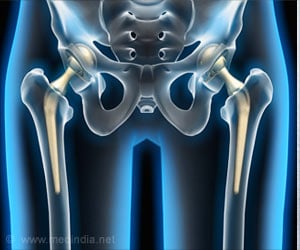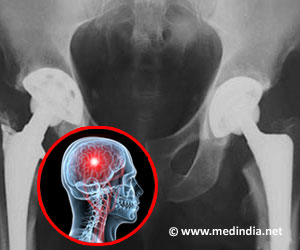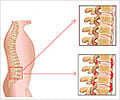Urinary markers that differentiate total hip replacement patients who eventually develop bone tissue destruction (osteolysis), from patients who do not develop osteolysis.

‘Urinary markers that differentiate total hip replacement patients who eventually develop bone tissue destruction (osteolysis), from patients who do not develop osteolysis.’





The levels of certain markers helped the investigators identify patients at risk for osteolysis long before the emergence of signs through imaging tests--in some cases 6 years before a diagnosis was made. Although single markers showed moderate accuracy, the combination of α-CTX, a bone resorption marker, and IL-6, an inflammatory marker, led to high accuracy in the differentiation of patients who eventually developed osteolysis from those with no signs of osteolysis. "We are hopeful that early biomarkers for implant loosening will alert surgeons to be especially vigilant in their follow-up of at-risk patients and may eventually lead to treatments delaying or avoiding the need for revision surgery," said senior author Dr. D. Rick Sumner, of Rush University Medical Center, in Chicago. "Perhaps even more intriguing is that the two biomarkers we identified also differed before surgery among patients who eventually developed peri-implant osteolysis and those who did not, supporting the concept that other researchers have proposed of genetic risk factors for loosening."
Source-Eurekalert














